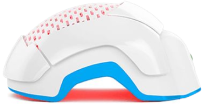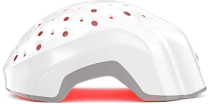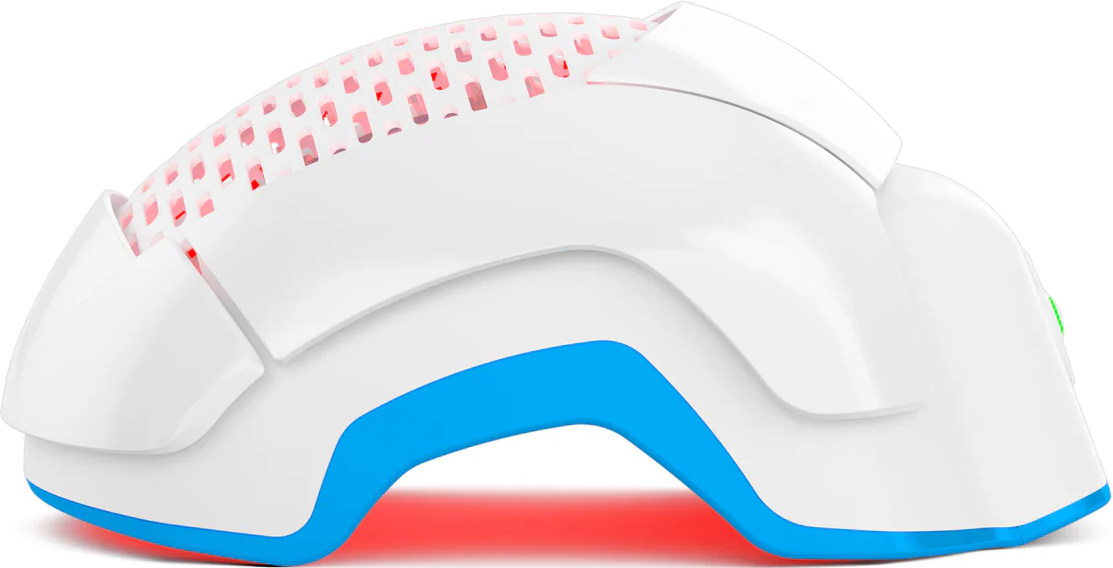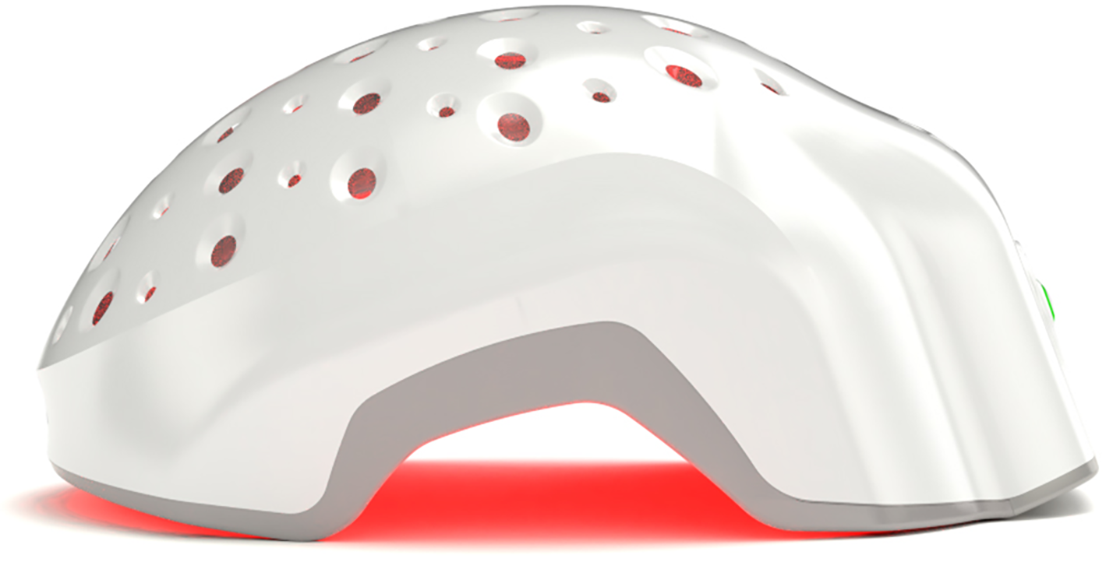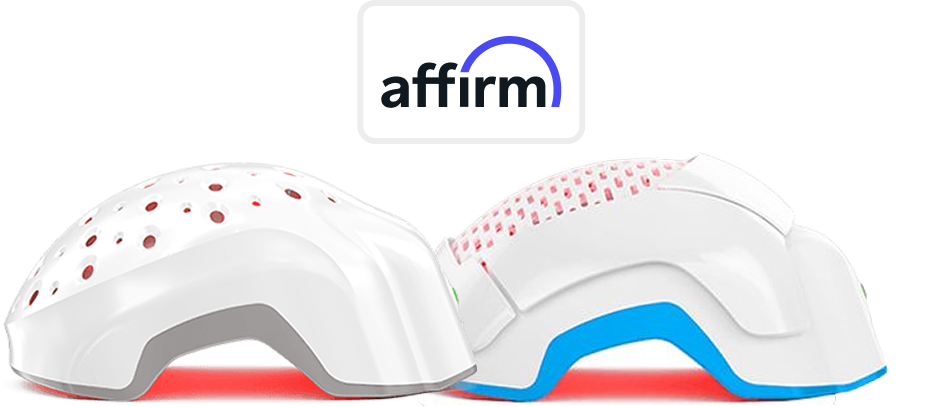Let’s be honest—nothing ruins your hair game quite like the realization that your once luscious locks have taken on the texture of straw.
Dehydrated hair is more common than you might think, and it’s not just about skipping a conditioner or two. When your hair starts feeling more like a brittle broom than a silky strand, it’s waving a red flag for help.
Dehydrated hair is not just a cosmetic concern; it’s a cry from your hair strands for moisture and care. When your hair lacks proper hydration, it becomes vulnerable to damage, breakage, and that dreaded dullness, leading to dead hair. You might think you’ve been doing everything right, but if your hair isn’t properly hydrated, all those efforts could be going down the drain—literally.
So, what are the signs that your hair is dehydrated? And more importantly, how do you fix it?
Before you reach for yet another serum that promises the world, let’s discuss the five critical signs of dehydrated hair and the expert-backed ways to fix them. Before that, let's look at what dehydrated hair really is.
What is Dehydrated Hair?
Dehydrated hair is simply hair that lacks moisture and water content. Think of it like a plant that hasn't been watered – just as plants need water to stay perky and healthy; your hair needs moisture to stay soft and bouncy. When your hair loses more water than it takes in, it becomes dehydrated. Your hair can be dry for several reasons: using too much heat styling, swimming in chlorinated water, using harsh hair products, or even just being out in the sun for too long. Prolonged exposure to the sun can burn the scalp, which might lead to hair loss.
5 Common Signs of Dehydrated Hair
Your hair has its own way of telling you when it's thirsty. Here are the key signs & symptoms of dehydrated hair to watch for:
1. Dullness: When Your Hair Loses Its Shine
When your hair is healthy, it reflects light, giving it that enviable shine and vibrancy. This shine is a sign that your hair’s cuticle layers are lying flat and smooth, allowing light to bounce off evenly. But when your hair becomes dehydrated, those cuticles lift and roughen, leading to a dull, lackluster appearance. If your hair’s lost its sparkle, it’s probably a sign of dehydrated hair.
Dry hair struggles to reflect light properly, making it look tired, flat, and, frankly, a little sad.
How to Fix It
The good news is you can restore that shine with a few targeted tweaks to your hair care routine. First, consider incorporating deep conditioning treatments into your regimen—look for hydrating ingredients like argan oil and shea butter, which are known for their moisturizing properties. These ingredients work to seal the hair cuticles, locking in moisture and giving your hair that sleek, glossy finish.
Reducing heat styling is another crucial step in fixing damaged hair. Heat tools like straighteners and curling irons can strip your hair of its natural oils, exacerbating dryness and dullness. Opt. for air-drying whenever possible or at least lower the heat setting on your tools to minimize damage.
Also, consider swapping your cotton pillowcase for a silk one. Silk helps to maintain your hair’s moisture levels, reducing friction and preventing the roughing up of hair cuticles that can lead to a dull appearance. With these simple adjustments, you can bring your hair back from the brink of dehydration and restore its natural, healthy shine.
2. Brittle Hair and Breakage
When your hair feels more like straw than silk, it's waving a red flag—dehydration.
Dehydrated hair lacks the moisture it needs to stay strong and flexible, which means it becomes prone to breakage. It’s just like a dry twig snapping under pressure; without enough moisture, your hair becomes brittle, weak, and all too ready to break off at the slightest tug. If your hair’s breaking off faster than you can style it, it’s not just a bad hair day—it’s a sign that your locks are crying out for hydration.
How to Fix It
Fixing brittle hair isn’t just about slathering on any old conditioner and calling it a day. First, let’s get serious about strengthening your hair strands. Incorporating protein treatments into your routine can help rebuild the structure of your hair, making it more resilient against breakage. Look for treatments that contain hydrolyzed proteins, as they penetrate the hair shaft more effectively, fortifying each strand from within.
Next, locking in moisture is crucial. A leave-in conditioner can be your hair’s best friend, adding an extra layer of hydration that sticks around long after your shower. Opt for products that are rich in humectants, like glycerin or hyaluronic acid, which attract and retain moisture in the hair.
And here’s a tip: regular trims are essential. Yes, we all love our long locks, but letting split ends run wild only leads to more breakage. By trimming your hair every 6-8 weeks, you prevent those splits from traveling up the hair shaft, keeping your hair healthier in the long run.
3. Frizz and Flyaways
Frizz and flyaways are like your hair’s way of signaling its desperate need for moisture. When your hair is dehydrated, the outer layer of the hair shaft (the cuticle) lifts up, allowing moisture from the air to sneak in, which causes the hair to swell and become frizzy.
Frizz is one of the most obvious signs of dehydrated hair because it shows that your hair is struggling to retain moisture. When the hair lacks hydration, it tries to pull moisture from the surrounding environment, resulting in that unruly, frizzy look we all dread.
Flyaways, those annoying little strands that refuse to lay flat, are often a result of the same issue. They pop up when the hair cuticle is rough and lifted, another indicator that your hair is parched.
How to Fix It
The good news is you can calm the frizz and tame those flyaways with the right approach. Start by incorporating anti-frizz serums and oils into your routine. These products help smooth the hair cuticle, lock in moisture, and create a protective barrier against humidity. Look for products with nourishing ingredients like argan oil, which is known for its ability to hydrate and soften hair.
Then, consider switching to sulfate-free shampoos and conditioners. Sulfates are harsh detergents that can strip your hair of its natural oils, exacerbating dryness and frizz. A sulfate-free option cleanses without drying out your hair, leaving it softer and more manageable. Regular conditioning and occasional deep-conditioning treatments will also help maintain moisture levels and repair the hair cuticle.
By addressing the root causes of frizz, you’ll not only manage those pesky flyaways but also improve the overall health and hydration of your hair. After all, a little TLC goes a long way in keeping your locks smooth, shiny, and frizz-free.
Read more about how to fix the frizzy hair.
4. Rough Texture
When your hair starts feeling more like a loofah than the silky strands you remember, you’re dealing with a classic case of dehydration. Dehydrated hair loses its natural smoothness, making it feel rough, coarse, and overall unpleasant to the touch. This rough texture is a clear sign that your hair is crying out for moisture. When the hair cuticle—the outermost layer of your hair strand—lifts due to lack of hydration, it loses its ability to reflect light, giving your hair that dull, lackluster appearance.
How to Fix It
If your hair feels more like straw than silk, it’s time to drench it in some TLC. Start by incorporating hydrating hair masks into your routine; these masks are packed with ingredients that penetrate deeply to restore moisture and softness. Look for masks that contain natural oils, such as argan or coconut oil, which are known for their intense moisturizing properties.
Regular conditioning treatments are also essential for repairing rough texture. Opt for conditioners that specifically target moisture retention and repair damaged hair cuticles. And here’s a pro tip: rinse your hair with cold water after conditioning. This simple step helps seal the hair cuticle, locking in moisture and adding a natural shine.
Dealing with hair moisture loss doesn’t have to be a losing battle. With the right products and a bit of extra care, you can transform rough, dehydrated hair into soft, touchable tresses. Remember, hydrated hair isn’t just about feeling good—it’s about looking good too.
5. Lack of Elasticity: When Your Hair Won’t Bounce
Healthy hair should be like a well-made rubber band—it stretches when you need it to but bounces right back without snapping. That bounce-back quality, known as elasticity, is a key indicator of your hair's health. When hair is properly hydrated, it can stretch up to 30% of its length without breaking. But when dehydration sets in, elasticity goes out the window, leaving your hair more prone to breakage and damage.
If your hair stretches and then snaps or, worse, doesn't stretch at all, it's a sign—your hair strands are dehydrated and in desperate need of moisture. This lack of elasticity is not just a cosmetic concern; it’s a sign that your hair's structure is compromised, making it more susceptible to further damage.
How to Fix It
To bring back your hair's bounce, start by incorporating hydrating treatments that specifically target elasticity. Look for products rich in keratin and silk proteins, which can help rebuild your hair's structure and restore its natural stretch.
Minimizing heat styling and avoiding chemical treatments are also crucial steps in preventing further moisture loss. Heat and chemicals can strip your hair of its natural oils, exacerbating dryness and reducing elasticity even further. By cutting back on these practices, you give your hair a fighting chance to regain its natural flexibility.
Also, regular conditioning and using leave-in treatments can help maintain moisture levels, keeping your hair resilient and less prone to snapping. After all, you wouldn’t keep stretching a rubber band if it’s about to break—your hair deserves the same care and attention.
What Causes Dehydrated Hair?
Your hair gets dehydrated when it doesn’t get enough moisture, leaving it dry and brittle. One of the main causes is using harsh hair products, like shampoos with sulfates or alcohol-based styling products, which strip away the natural oils that keep your hair hydrated. Heat styling tools, such as hair dryers, straighteners, and curling irons, also cause dehydration by drying out the moisture in your hair.
Environmental factors like sun exposure, wind, and cold weather can also dry out your hair, making it more prone to dehydration. Additionally, not drinking enough water or lacking essential nutrients in your diet can affect your hair’s ability to retain moisture, leading to dry, damaged strands.
How to Rehydrate Your Hair
When your hair feels dry and lifeless, it needs extra moisture to look healthy again. Rehydrating your hair can bring back its shine and softness. Here are some easy ways to treat dehydrated hair:
Daily Hair Care Routine
When it comes to moisturizing dry hair, the right shampoo and conditioner are your first line of defense. Opt. for products specifically designed to rehydrate and nourish parched strands. These are often packed with humectants and oils that help lock in moisture, giving your hair that hydrated bounce.
But before you start with daily washing, remember that over-washing can strip your hair of its natural oils, making it even drier. Limit your hair washing to 2-3 times a week to preserve these oils. And when you do wash, ditch the brush for a wide-tooth comb. It’s gentle on your strands and helps prevent breakage, which is crucial when your hair is already crying out for moisture.
Diet and Hydration
Good hair doesn’t just come from a bottle. Staying hydrated by drinking plenty of water is essential, but that’s just the start. Otherwise, dehydration can lead to hair loss. Your diet plays a massive role in hair hydration. Foods rich in omega-3 fatty acids, like salmon and flaxseeds, and vitamins such as biotin and vitamin E, support hair health from the inside out.
Protecting Your Hair from Environmental Stressors
Environmental factors like sun exposure, pollution, and even your favorite hat can wreak havoc on your hair’s moisture levels. To keep your hair safe from these stressors, start by choosing headwear that’s not too tight and made of breathable materials—this prevents unnecessary friction and allows your scalp to breathe.
And don’t forget the importance of regular washing, not just of your hair but your hats too! Sweat and bacteria can build up on your headwear, transferring to your hair and scalp, which can exacerbate dry hair. Clean hats mean a clean slate for your hair.
Looking For Hair Loss Solution Caused by Dehydrated Hair
If you're dealing with hair loss caused by dehydrated hair, Theradome can help. Theradome is a laser hair growth helmet uses advanced laser phototherapy technology to stimulate hair follicles and promote healthy hair growth. The laser light penetrates the scalp to improve blood flow, helping to restore moisture and nutrients to the hair. This process supports hair regrowth and helps prevent further hair loss caused by dehydration.
Theradome offers two helmets designed for hair loss treatment: the Theradome PRO and the Theradome EVO laser hair growth device. Both helmets use medical-grade lasers that target the scalp to nourish hair follicles and encourage growth. The difference lies in the number of lasers, with the PRO offering more laser power for faster results. Both helmets are safe, easy to use, and provide an effective solution for hair loss due to dehydration.
Conclusion
Knowing the signs of dehydrated hair is the first step to bringing back its health. If your hair feels dull, brittle, or rough, it’s likely in need of more moisture. By recognizing these signs early, you can take action with the right treatments to restore softness and shine. Keep your hair hydrated, and it will look and feel its best! Fixing it involves using deep conditioners, protein treatments, reducing heat styling, and incorporating hydrating products with oils like argan or coconut. Simple changes in your hair care routine, such as using sulfate-free products and trimming regularly, can help restore moisture and improve hair health.


